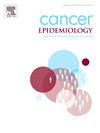社会人口因素对乳腺癌筛查障碍的影响:一项横断面研究
IF 2.3
3区 医学
Q3 ONCOLOGY
引用次数: 0
摘要
确定癌症筛查的障碍对于制定有效的策略以加强有组织的筛查项目至关重要。目前,有限的研究涉及巴西妇女对这些障碍的看法以及社会人口因素的影响。本研究旨在调查社会人口因素对本文章由计算机程序翻译,如有差异,请以英文原文为准。
The influence of sociodemographic factors on barriers to breast cancer screening: A cross-sectional study
Background
Identifying barriers to cancer screening is essential for developing effective strategies to enhance organized screening programs. Currently, limited studies address Brazilian women’s perceptions of these barriers and the influence of sociodemographic factors. This study aims to investigate the impact of sociodemographic factors on barriers to breast cancer screening in the state of São Paulo, a region marked by significant socioeconomic disparities.
Methods
A cross-sectional study was conducted using a representative sample of women aged 50–69 years residing in São Paulo, who were users of the Brazilian Unified Health System (SUS). Data were gathered through a semi-structured questionnaire designed to assess sociodemographic factors and barriers to breast cancer screening. Barriers were classified into two categories: those related to women and those associated with the healthcare system. Multinomial logistic regression models were used to examine the relationships between the sociodemographic factors and these barriers.
Results
The main barriers to breast screening were pain experienced during mammography, long waiting times, and scheduling difficulties. Lower education levels and Brown or Black skin color were associated with perceptions of longer waiting times, while pre-existing health conditions were linked to fear of diagnosis. Employment status was associated with forgetfulness, scheduling challenges, and longer waiting times. Furthermore, residence area was associated with feelings of embarrassment, pain, and scheduling difficulties.
Conclusion
Barriers to breast cancer screening differ based on sociodemographic factors. Brown or Black skin color, residence in the Metropolitan Region of São Paulo (MRSP), employment status, and chronic diseases were predictors of women-related barriers. On the other hand, Brown or Black skin color, lower education levels, employment status, and living in the MRSP were predictors of system-related barriers. The findings offer valuable insights for designing targeted strategies to improve breast cancer screening coverage.
求助全文
通过发布文献求助,成功后即可免费获取论文全文。
去求助
来源期刊

Cancer Epidemiology
医学-肿瘤学
CiteScore
4.50
自引率
3.80%
发文量
200
审稿时长
39 days
期刊介绍:
Cancer Epidemiology is dedicated to increasing understanding about cancer causes, prevention and control. The scope of the journal embraces all aspects of cancer epidemiology including:
• Descriptive epidemiology
• Studies of risk factors for disease initiation, development and prognosis
• Screening and early detection
• Prevention and control
• Methodological issues
The journal publishes original research articles (full length and short reports), systematic reviews and meta-analyses, editorials, commentaries and letters to the editor commenting on previously published research.
 求助内容:
求助内容: 应助结果提醒方式:
应助结果提醒方式:


